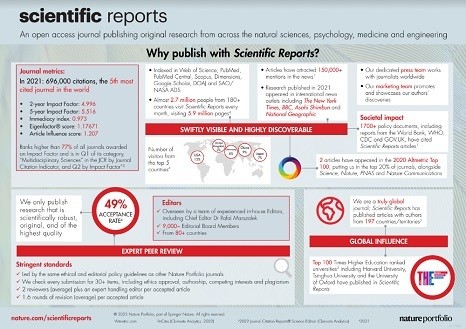
Estimation of the global burden of Mycobacterium tuberculosis lineage 1 (2021)
Title : Estimation of the global burden of Mycobacterium tuberculosis lineage 1
Researcher : Dr.Thidarat Netikul
Department : Faculty of Medicine, Siam University, Bangkok, Thailand
E-mail : med@siam.edu
Abstract : Tuberculosis is still problematic as it affects large numbers of people globally. Mycobacterium tuberculosis Lineage 1 (L1) or Indo Oceanic Lineage, one of widespread major lineages, has a specific geographic distribution and high mortality. It is highly diverse and endemic in several high burden countries. However, studies on the global burden of L1 and its sublineages remain limited. This may lead to the underestimation of the importance of its variance in developing and applying tuberculosis control measures.
This study aimed to estimate the number of patients infected with M. tuberculosis L1 and its sublineages worldwide. The proportion of L1 among tuberculosis patients was searched in published reports from countries around the world and the number of patients was calculated based on a WHO report on country incidences and populations.
The numbers of patients infected with the five major sublineages, namely L1.1.1, L1.1.2, L1.1.3, L1.2.1, and L1.2.2 were estimated where information was available. It was found that L1 accounted for 28% of global tuberculosis cases in 2012 and 2018. Over 80% of the L1 global burden was in India, the Philippines, Indonesia and Bangladesh, which are also among the countries with highest absolute numbers of tuberculosis patients in the world. Globally, the estimated number of patients infected with M. tuberculosis L1.2.1 and L1.1.2 was over 1.1 million and of patients infected with L1.1.1 was about 200,000.
This study demonstrated that L1 contributes significantly to the global burden of tuberculosis. To achieve the End TB Strategy, more attention needs to be paid to the responses of M. tuberculosis L1 to various control measures.
Keywords: Mycobacterium tuberculosis, Molecular epidemiology, East African Indian Spoligotype, Lineage 1, Sublineages of L1, Global burden
Link to Academic article: https://doi.org/10.1016/j.meegid.2021.104802
Journal : Infection, Genetics and Evolution Volume 91, July 2021, 104802
Bibliography : Thidarat Netikul, Prasit Palittapongarnpim, Yuttapong Thawornwattana, & Supada Plitphonganphim. (2021). Estimation of the global burden of Mycobacterium tuberculosis lineage 1. Infection, Genetics and Evolution, 91, 104802. https://doi.org/10.1016/j.meegid.2021.104802.
Genetic characterization of carbapenem-resistant enterobacteriaceae and the spread of carbapenem-resistant klebsiella pneumonia ST340 at a university hospital in Thailand (2015)
Title : Genetic characterization of carbapenem-resistant enterobacteriaceae and the spread of carbapenem-resistant klebsiella pneumonia ST340 at a university hospital in Thailand
Researcher : Netikul, T.,[mfn]1[/mfn] Kiratisin, P.
Department : 1Faculty of Medicine, Siam University, Bangkok, Thailand
E-mail : med@siam.edu
Abstract : Carbapenem-resistant Enterobacteriaceae (CRE) has increasingly spread worldwide in the past decade. The prevalence and characteristics of CRE in Thailand are unknown. In this study, we conducted a 2-year surveillance of CRE among 12,741 clinical isolates of Enterobacteriaceae at the largest university hospital in Thailand with molecular characterization of beta-lactamase (bla) genes, including carbapenemase genes. The CRE prevalence was 1.4%. blaKPC-13 and blaIMP-14a were the only carbapenemase genes detected among these CRE isolates. blaKPC-13 gene was found in a single isolate of Escherichia coli, Enterobacter cloacae and Citrobacter freundii, and blaIMP-14a was found in four isolates of Klebsiella pneumoniae. Carbapenem-resistant K. pneumoniae (CRKP) isolates were resistant to multiple carbapenems at a higher ratio than other CRE species, and thus were further characterized for resistance phenotypes, bla genotypes and molecular epidemiology. Most CRKP isolates harboured multiple bla genes, especially those related to extended-spectrum beta-lactamases. Seven CRKP isolates were resistant to all tested carbapenems, and showed decreased ompK35 and/or ompK36 porin gene expression. Molecular typing of CRKP based on pulsed-field gel electrophoresis (PFGE) demonstrated several unrelated clones. Multilocus sequence typing (MLST) was partially concordant with PFGE results and revealed that ST340, a member of drug-resistant K. pneumoniae clonal complex 258, was the most predominant clone, followed by ST48, ST11 and ST273. The novel ST1645 was identified from this study. ST340 has neither been shown to be predominated among CRKP from other studies, nor been reported in Thailand. Therefore, it emphases a critical concern to monitor and control the spread of CRKP.
Link to Academic article: https://doi.org/10.1371/journal.pone.0139116
Journal : PLoS ONE, 2015, 10(9), e0139116
Bibliography : Netikul, T., & Kiratisin, P. (2015). Genetic characterization of carbapenem-resistant enterobacteriaceae and the spread of carbapenem-resistant klebsiella pneumonia ST340 at a university hospital in Thailand. PLoS ONE, 2015, 10(9), e0139116. https://doi.org/10.1371/journal.pone.0139116

Whole-genome single nucleotide variant phylogenetic analysis of Mycobacterium tuberculosis Lineage 1 in endemic regions of Asia and Africa (2022)
Title : Whole-genome single nucleotide variant phylogenetic analysis of Mycobacterium tuberculosis Lineage 1 in endemic regions of Asia and Africa
Researcher : Netikul, T.,[mfn]1[/mfn] Thawornwattana, Y., Mahasirimongkol, S., …Chongsuvivatwong, V., Palittapongarnpim, P.
Department : 1Faculty of Medicine, Siam University, Bangkok, Thailand
E-mail : med@siam.edu
Abstract : Mycobacterium tuberculosis (Mtb) lineage 1 (L1) contributes considerably to the disease morbidity. While whole genome sequencing (WGS) is increasingly used for studying Mtb, our understanding of genetic diversity of L1 remains limited. Using phylogenetic analysis of WGS data from endemic range in Asia and Africa, we provide an improved genotyping scheme for L1. Mapping deletion patterns of the 68 direct variable repeats (DVRs) in the CRISPR region of the genome onto the phylogeny provided supporting evidence that the CRISPR region evolves primarily by deletion, and hinted at a possible Southeast Asian origin of L1. Both phylogeny and DVR patterns clarified some relationships between different spoligotypes, and highlighted the limited resolution of spoligotyping. We identified a diverse repertoire of drug resistance mutations. Altogether, this study demonstrates the usefulness of WGS data for understanding the genetic diversity of L1, with implications for public health surveillance and TB control. It also highlights the need for more WGS studies in high-burden but underexplored regions.
Link to Academic article: https://www.nature.com/articles/s41598-022-05524-0
Journal : Scientific Reports,
Bibliography : Netikul, T., Thawornwattana, Y., Mahasirimongkol, S., Yanai, H., WinMaung, H. M., Chongsuvivatwong, V.,… Palittapongarnpim, P. (2022). Whole-genome single nucleotide variant phylogenetic analysis of Mycobacterium tuberculosis Lineage 1 in endemic regions of Asia and Africa. Scientific Reports, 12(1), 1565.